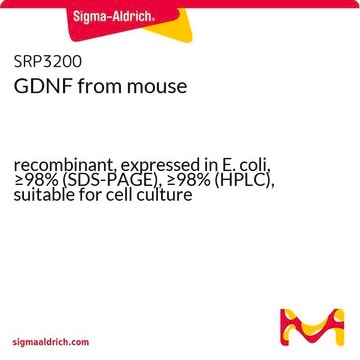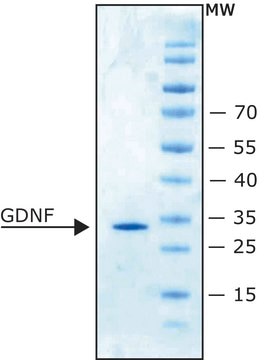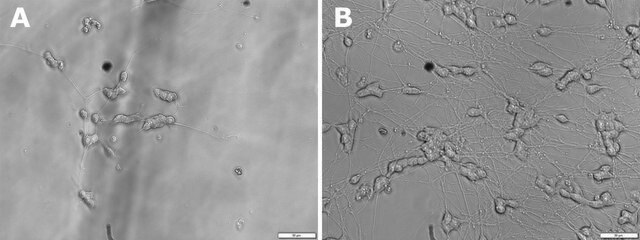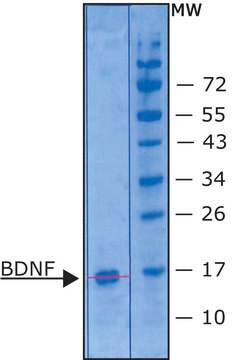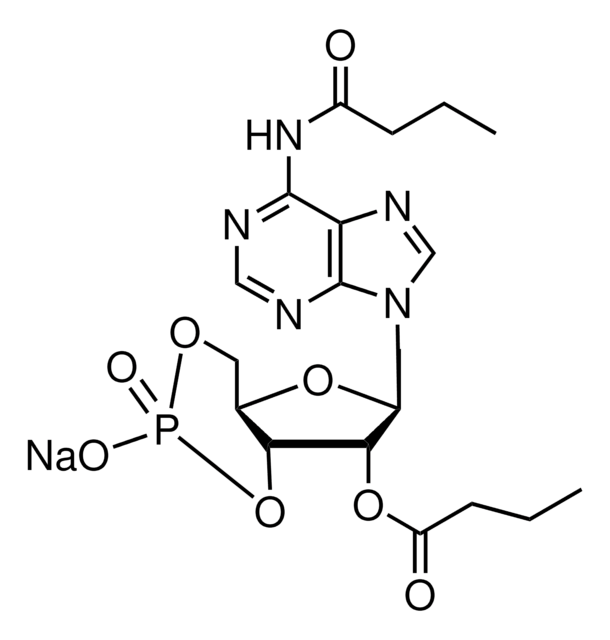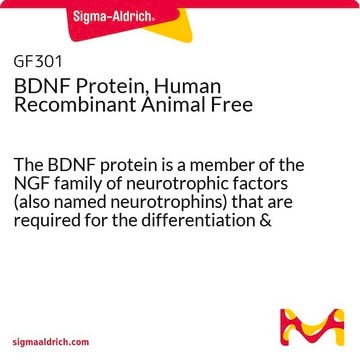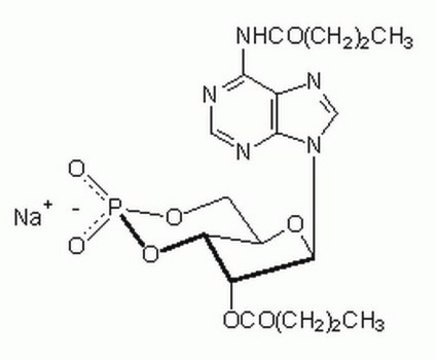SRP3309
GDNF human
recombinant, expressed in E. coli, Animal-component free, ≥98% (SDS-PAGE), ≥98% (HPLC)
Synonym(s):
ATF-1
Sign Into View Organizational & Contract Pricing
All Photos(1)
About This Item
UNSPSC Code:
12352202
NACRES:
NA.32
Recommended Products
biological source
human
recombinant
expressed in E. coli
assay
≥98% (HPLC)
≥98% (SDS-PAGE)
form
lyophilized
potency
≤0.1 μg/mL
mol wt
30.0 kDa
packaging
pkg of 10 μg
impurities
endotoxin, tested
UniProt accession no.
shipped in
wet ice
storage temp.
−20°C
Gene Information
human ... GDNF(2668)
Related Categories
General description
Glial cell derived neurotrophic factor (GDNF) is a disulfide-linked homodimeric neurotrophic factor structurally related to Artemin, Neurturin and Persephin. These proteins belong to the cysteine-knot superfamily of growth factors that assume stable dimeric protein structures. The gene encoding this protein is localized on human chromosome 5p13.2. The functional human GDNF ligand is a disulfide-linked homodimer, of two 15kDa polypeptide chains called monomers. Each monomer contains seven conserved cysteine residues, one of which (Cys 101) is used for inter-chain disulfide bridging and the others are involved in intramolecular ring formation known as the cysteine knot configuration.
Application
Glial cell derived neurotrophic factor (GDNF) has been used as a supplement in dorsal root ganglion (DRG) culture medium to study the effect of growth factors on neuron viability, neurite outgrowth and arborisation. (3)
Biochem/physiol Actions
Glial cell derived neurotrophic factor (GDNF) signals through a multicomponent receptor system, composed of a RET and one of the four GFR-α (α1-4) receptors. GDNF specifically promotes dopamine uptake and survival and morphological differentiation of midbrain neurons. Using Parkinson′s disease mouse model, GDNF has been shown to improve conditions such as bradykinesia, rigidity, and postural instability.
Physical form
Lyophilized from 10 mM Sodium Citrate + 50 mM NaCl.
Reconstitution
Centrifuge the vial prior to opening. Reconstitute in water to a concentration of 0.1-1.0 mg/ml. Do not vortex. This solution can be stored at 2-8°C for up to 1 week. For extended storage, it is recommended to further dilute in a buffer containing a carrier protein (example 0.1% BSA) and store in working aliquots at -20°C to -80°C.
wgk_germany
WGK 3
flash_point_f
Not applicable
flash_point_c
Not applicable
Certificates of Analysis (COA)
Search for Certificates of Analysis (COA) by entering the products Lot/Batch Number. Lot and Batch Numbers can be found on a product’s label following the words ‘Lot’ or ‘Batch’.
Already Own This Product?
Find documentation for the products that you have recently purchased in the Document Library.
Primary Postnatal Dorsal Root Ganglion Culture from Conventionally Slaughtered Calves.
Fadda A
PLoS ONE, 11(12), e0168228-e0168228 (2016)
Analysis of RET, ZEB2, EDN3 and GDNF genomic rearrangements in 80 patients with Hirschsprung disease (using multiplex ligation-dependent probe amplification).
Serra A
Annals of Human Genetics, 73(2), 147-151 (2009)
Enrique Pimentel
Handbook of Growth Factors, Volume 2 null
Jacob L Roam et al.
Biomaterials, 35(24), 6473-6481 (2014-05-13)
Introduction of spatial patterning of proteins, while retaining activity and releasability, is critical for the field of regenerative medicine. Reversible binding to heparin, which many biological molecules exhibit, is one potential pathway to achieve this goal. We have covalently bound
L F Lin et al.
Science (New York, N.Y.), 260(5111), 1130-1132 (1993-05-21)
A potent neurotrophic factor that enhances survival of midbrain dopaminergic neurons was purified and cloned. Glial cell line-derived neurotrophic factor (GDNF) is a glycosylated, disulfide-bonded homodimer that is a distantly related member of the transforming growth factor-beta superfamily. In embryonic
Our team of scientists has experience in all areas of research including Life Science, Material Science, Chemical Synthesis, Chromatography, Analytical and many others.
Contact Technical Service